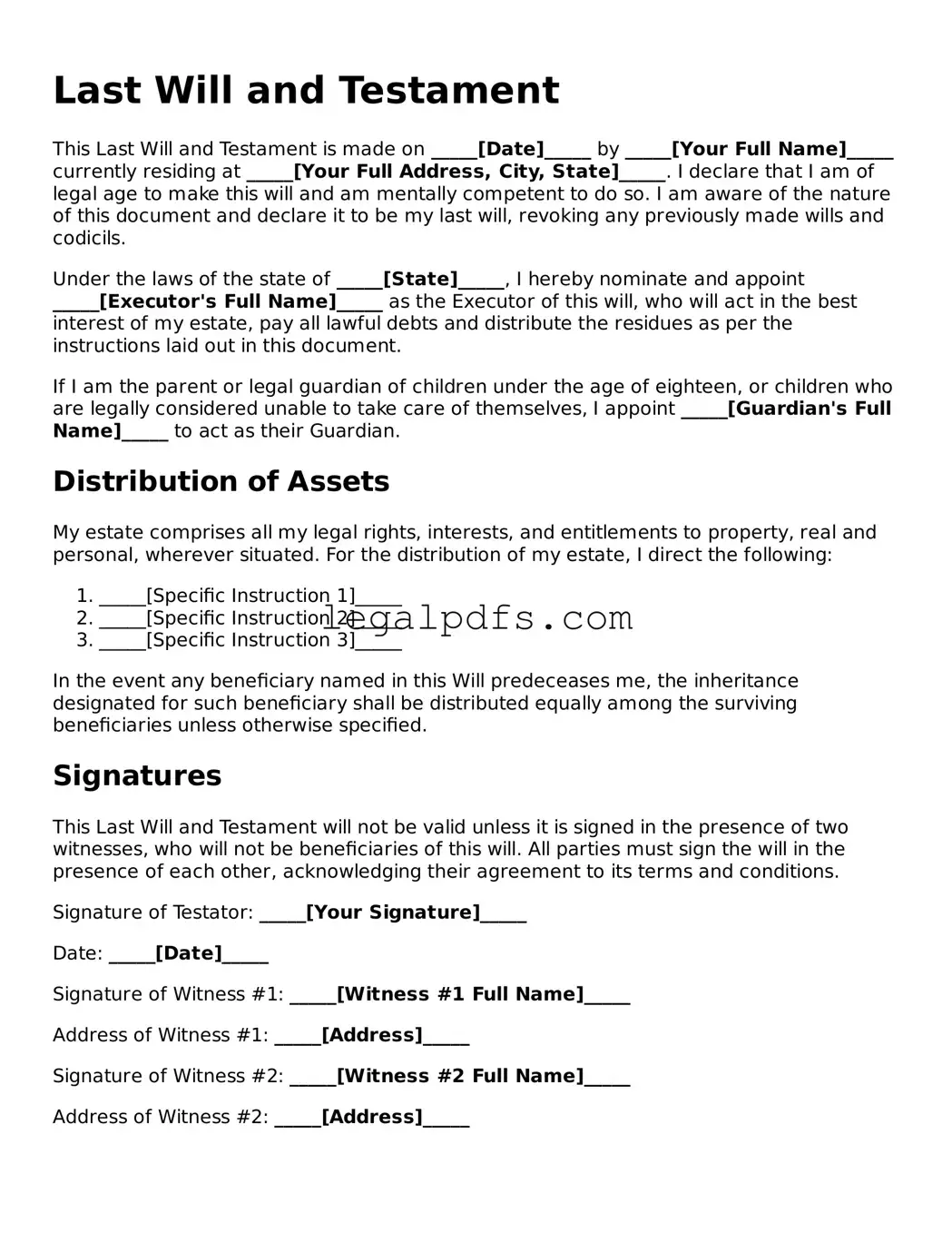Last Will and Testament
This Last Will and Testament is made on _____[Date]_____ by _____[Your Full Name]_____ currently residing at _____[Your Full Address, City, State]_____. I declare that I am of legal age to make this will and am mentally competent to do so. I am aware of the nature of this document and declare it to be my last will, revoking any previously made wills and codicils.
Under the laws of the state of _____[State]_____, I hereby nominate and appoint _____[Executor's Full Name]_____ as the Executor of this will, who will act in the best interest of my estate, pay all lawful debts and distribute the residues as per the instructions laid out in this document.
Section for Appointing Guardian for Minors if applicable
If I am the parent or legal guardian of children under the age of eighteen, or children who are legally considered unable to take care of themselves, I appoint _____[Guardian's Full Name]_____ to act as their Guardian.
Section for Distribution of Assets
Distribution of Assets
My estate comprises all my legal rights, interests, and entitlements to property, real and personal, wherever situated. For the distribution of my estate, I direct the following:
- _____[Specific Instruction 1]_____
- _____[Specific Instruction 2]_____
- _____[Specific Instruction 3]_____
In the event any beneficiary named in this Will predeceases me, the inheritance designated for such beneficiary shall be distributed equally among the surviving beneficiaries unless otherwise specified.
Signatures
This Last Will and Testament will not be valid unless it is signed in the presence of two witnesses, who will not be beneficiaries of this will. All parties must sign the will in the presence of each other, acknowledging their agreement to its terms and conditions.
Signature of Testator: _____[Your Signature]_____
Date: _____[Date]_____
Signature of Witness #1: _____[Witness #1 Full Name]_____
Address of Witness #1: _____[Address]_____
Signature of Witness #2: _____[Witness #2 Full Name]_____
Address of Witness #2: _____[Address]_____
